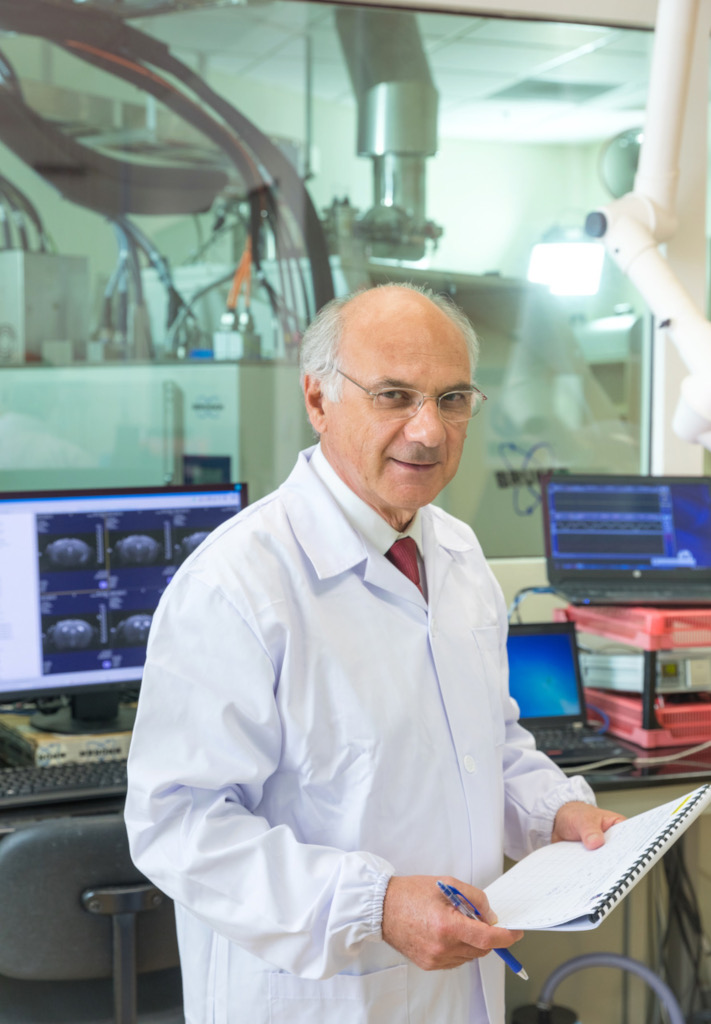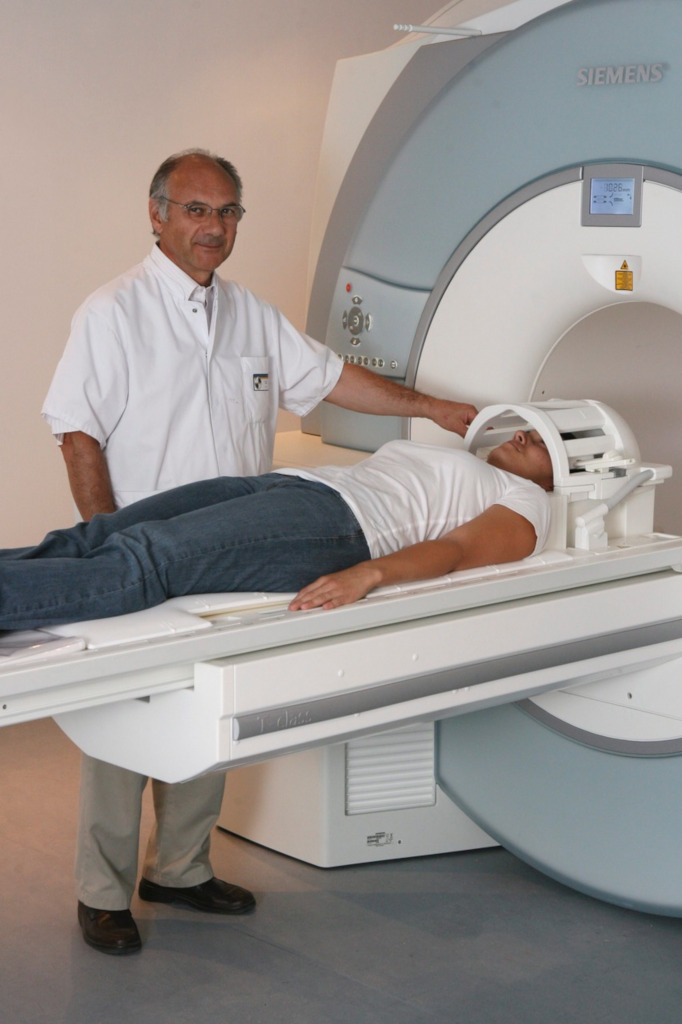[ad_1]
Patrick Cozzone
Executive Director
Singapore Bioimaging Consortium (SBIC),
Agency for Science, Technology and Research (A*STAR)
Singapore
AsianScientist (Jan. 8, 2021) – At the turn of the 20th century, the first-ever Nobel Prize in Physics was awarded to an obscure physicist with a remarkable discovery. Just six years prior, in 1895, Wilhelm Roentgen observed that despite the presence of a heavy black cardboard barrier, rays emanating from a cathode tube made a nearby screen glow. His subsequent experiments showed that these mysterious rays could penetrate the body’s soft tissues to reveal bones and even metal objects, culminating in the now-iconic image of his wife’s hand—bones, wedding ring and all.
These rays, which Roentgen later termed x-rays, hailed the advent of bioimaging by rendering visible what was once hidden from sight. Since then, bioimaging has become indispensable in clinical practice, allowing the visualization of everything from broken bones to cancerous masses. With the increasing sophistication of imaging techniques, the field has gone beyond routine anatomical imaging to probing biological processes at a molecular scale.
As executive director of the Agency for Science, Technology and Research’s (A*STAR) Singapore Biomaging Consortium (SBIC), Professor Patrick Cozzone spearheads the development of novel imaging strategies to address some of the world’s most pressing public health problems including cancer, cardiovascular diseases and COVID-19. Just last year, he co-founded Respiree, an SBIC spin-off that utilizes wearable sensors for the early prediction of clinical deterioration. For his pioneering contributions to bioimaging, Cozzone was conferred the French Legion of Honor in 2013.
In this interview with Asian Scientist Magazine, Cozzone reflects on his unlikely beginnings as a bioimaging scientist and gives us a preview of the innovative research taking place at SBIC.
I was not predestined to have a career in biomedical imaging! My college education was in mathematics, physics and chemistry, and I subsequently completed a PhD in biochemistry and molecular biology.
As a research scientist at Stanford University Medical Center in the 1970s, I used nuclear magnetic resonance (NMR) to study biomolecules, and as a side project, I tried to obtain images of some biological objects using NMR. While there were other teams also doing the same thing, none of us realized at that time that we were laying the foundations for MRI.
This is how I entered biomedical imaging which has since become a full-fledged scientific discipline. The diversity and dynamism of bioimaging, its ever-developing medical applications, the many technological challenges to overcome and the unlimited margins of progress explain why scientists in the field never leave it! And I am one of them!
SBIC spearheads innovation in bioimaging, sensors and analytics and supports the wider Singapore R&D ecosystem in addressing national priorities. To achieve that, we leverage on our multidisciplinary expertise, advanced bioimaging capabilities and extensive network of clinical and industry partners.
SBIC is involved in a variety of projects spanning from supporting clinical imaging departments at public hospitals to developing non-invasive optical imaging technology for characterizing skin diseases and even qualifying magnetic resonance (MR) technology to study adulteration in food items such as honey or fruit juices!
Our R&D activities are organized around five pillars: biophotonics, MRI of human body composition, isotopic imaging and novel smart imaging probes, AI in imaging and finally, using bioimaging technologies in food analysis.

One exciting development would be the entry of artificial intelligence (AI) and machine-learning algorithms that increase efficiency and throughput, reduce variability and improve the quality of image interpretation.
Another developing area involves combining two imaging modalities to provide augmented information. Consider MR-PET systems. They combine the high quality and versatility of MR images with the sensitivity and specificity of positron emission tomography (PET) radioactive markers. This is particularly useful in cancer research including drug development and assessment of targeted therapies. SBIC is very active in this space at the preclinical level.
In 2018, SBIC’s Dr Fu Yu successfully combined optogenetics and ultrahigh field functional MRI to identify in mouse brains a new class of neurons that control appetite and food intake. These findings might be a gamechanger in the treatment of eating disorders and obesity. Collaborating with a Human Imaging Center of Excellence in France, Yu and I are verifying if the human brain presents the same features.
Finally, the whole field of optical bioimaging is also developing very fast. SBIC’s biophotonics platform headed by Prof Malini Olivo is recognized as a world leader in this field.
You could add to the list: chemists, physicists and computer scientists! And at SBIC, they come from 19 different countries, including Singapore; but our common language is “bioimaging.” Having such a variety of competencies under the same roof is an invaluable asset. This gives SBIC the distinct ability to push projects using in-house capabilities, increasing efficiency and ensuring quality control.
SBIC supports nationwide cohort studies, mostly through multimodal MR imaging and spectroscopy. For instance, SBIC’s Metabolic Imaging Group headed by Prof Sendhil Velan is implementing body composition imaging in GUSTO and the Singapore Adult Metabolism Study (SAMS), focusing on body fat partitioning, kidney development and cardiometabolic status.
In the SAMS cohort, ethnic differences were discovered with Indians having higher levels of abdominal fat and intramyocellular lipids. In the GUSTO cohort, we found that these ethnic differences in fat distribution manifest during early childhood. A genome-wide association study suggested that Indians have a higher representation of a specific risk allele which could partly explain ethnic differences in lipid accumulation.

The future of medicine is in precision health, where bioimaging will surely play a pivotal role. PET-CT and MRI are already widely used in precision cancer diagnosis, patient stratification and personalized therapy management.
In cancer research, bioimaging, with its capacity to non-invasively interrogate molecular and cellular events in living subjects could contribute to understanding the transition from normality to early disease.
In 2019, a SBIC patent on wearable sensors for measuring respiration patterns was licensed to Respiree Pte Ltd, a spin-off company founded by Dr Gurpreet Singh, a senior research fellow at SBIC. The core technology of Respiree relies on a sensor platform developed at SBIC that combines the measurement of respiratory rate, breathing patterns and blood oxygen levels of patients with artificial intelligence analytics.
The resulting data are sent wirelessly to a monitoring platform. AI then helps to analyze these vital signs to predict worsening conditions, enabling the early and effective management of clinical deterioration. To date, Respiree’s devices have been deployed on trial across selected local hospitals to aid in Singapore’s healthcare workers in the COVID-19 response. The devices have passed CE review by notified bodies with approval from Singapore’s Health Sciences Authority while FDA approval is pending.
Now, Respiree along with the National University Hospital and NUS Yong Loo Lin School of Medicine are collaborating to develop predictive models for the early and accurate detection of clinical deterioration in patients suffering from acute respiratory failure and pneumonia. Ultimately, the project hopes to identify and deploy novel respiratory biomarkers to predict worsening conditions in isolated COVID-19 patients.
This article is from a monthly series called Asia’s Scientific Trailblazers. Click here to read other articles in the series.
———
Copyright: Asian Scientist Magazine; Photo: Agency for Science, Technology and Research (A*STAR).
Disclaimer: This article does not necessarily reflect the views of AsianScientist or its staff.
[ad_2]
Source link